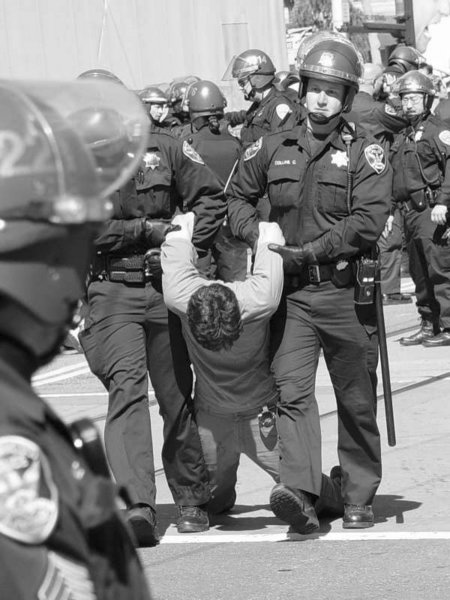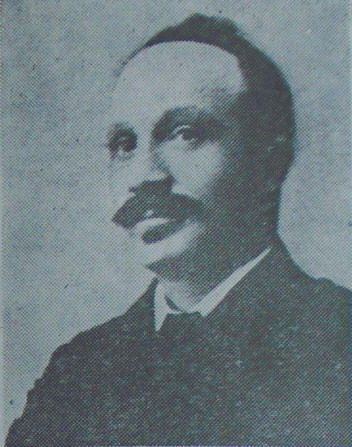|
Octav Băncilă
Octav Băncilă (; 4 February 1872 – 3 April 1944) was a Romanian Realism (arts), realist painter and left-wing activist. He was the brother of Sofia Nădejde, a Feminism, feminist journalist, and the brother-in-law of (an Atheism, atheist and socialist thinker, editor of the magazine ''Contemporanul''). Biography Born in Botoșani, he remained an orphan at age 4, and was raised in Iași by his much older sister and her husband, who first encouraged Octav's talent and passion for art. After completing primary school, he entered the George Enescu National University of Arts, Fine Arts School in Iași, where he was taught by Gheorghe Panaiteanu Bardasare, Constantin Daniel Stahi, and , graduating in 1893. Between 1894 and 1897, he lived and studied abroad on a scholarship: first in Italy and France, and finally in German Empire, Germany, where he studied under Nicholaos Gysis at the Academy of Fine Arts, Munich, Akademie der Bildenden Künste in Munich (it is not known whether h ... [...More Info...] [...Related Items...] OR: [Wikipedia] [Google] [Baidu] |
Corni, Botoșani
Corni is a communes of Romania, commune in Botoșani County, Western Moldavia, Romania. It is composed of four villages: Balta Arsă, Corni, Mesteacăn, and Sarafinești. The commune is located in the southwestern part of the county, on the border with Suceava County. Natives * Octav Băncilă (1872–1944), realist painter and left-wing activist References Communes in Botoșani County {{Botoşani-geo-stub ... [...More Info...] [...Related Items...] OR: [Wikipedia] [Google] [Baidu] |
Romani People In Romania
Romani people in Romania, locally and pejoratively referred to as the (), constitute the second largest ethnic minority in the country (the first being Hungarians). According to the 2021 census, their number was 569,477 people and 3.4% of the total population. The size of the total population of people with Romani ancestry in Romania is even more, with different estimates varying from 4.6 percent to over 10 percent of the population, because many people of Romani descent do not declare themselves Roma. For example, in 2007 the Council of Europe estimated that approximately 1.85 million Roma lived in Romania, based on an average between the lowest estimate (1.2 to 2.2 million people) and the highest estimate (1.8 to 2.5 million people) available at the time. This figure is equivalent to 8.32% of the population. On the other hand, less than half are native speakers of the Romani language. Origins History, genetics and linguistics all indicate the Roma originate from northern Indi ... [...More Info...] [...Related Items...] OR: [Wikipedia] [Google] [Baidu] |
Anti-Semitism
Antisemitism or Jew-hatred is hostility to, prejudice towards, or discrimination against Jews. A person who harbours it is called an antisemite. Whether antisemitism is considered a form of racism depends on the school of thought. Antisemitic tendencies may be motivated primarily by negative sentiment towards Jewish peoplehood, Jews as a people or negative sentiment towards Jews with regard to Judaism. In the former case, usually known as racial antisemitism, a person's hostility is driven by the belief that Jews constitute a distinct race with inherent traits or characteristics that are repulsive or inferior to the preferred traits or characteristics within that person's society. In the latter case, known as religious antisemitism, a person's hostility is driven by their religion's perception of Jews and Judaism, typically encompassing doctrines of supersession that expect or demand Jews to turn away from Judaism and submit to the religion presenting itself as Judaism's suc ... [...More Info...] [...Related Items...] OR: [Wikipedia] [Google] [Baidu] |
Jiu Valley
The Jiu Valley ( , ) is a region in southwestern Transylvania, Romania, in Hunedoara county, situated in a valley of the Jiu River between the Retezat Mountains and the Parâng Mountains. The region was heavily industrialised and the main activity was coal mines, coal mining, but due to low efficiency, most of the mines were closed down in the years following the collapse of Communist Romania, Communism in Romania. For a long time the place was called Romania's biggest coalfield. History Before the 19th century The region was populated since ancient times, being part of Dacia. During the Middle Ages, the inhabitants of the Jiu Valley lived in huts spread along the mountains, and often near the river, and the main activity was shepherding. Until the early 19th century the region remained sparsely populated due to its geographical isolation (being surrounded by mountains). 19th century and early 20th century The development of coal mining started in the Jiu Valley about 160 years ... [...More Info...] [...Related Items...] OR: [Wikipedia] [Google] [Baidu] |
Greater Romania
Greater Romania () is the Kingdom of Romania in the interwar period, achieved after the Great Union or the related pan-nationalist ideal of a nation-state which would incorporate all Romanian speakers.Irina LivezeanuCultural Politics in Greater Romania: Regionalism, Nation Building & Ethnic Struggle, 1918-1930 Cornell University Press, 2000, p. 4 and p. 302 In 1920, after the incorporation of Transylvania, Bukovina, Bessarabia and parts of Banat, Crișana, and Maramureș, the Romanian state reached its largest peacetime geographical extent (295,049 km2). Today, the concept serves as a guiding principle for the unification of Moldova and Romania. The idea is comparable to other similar conceptions such as Greater Bulgaria, Megali Idea, Greater Yugoslavia, Greater Hungary and Greater Italy. Ideology The theme of national identity had been always a key concern for Romanian culture and politics. The Romanian national ideology in the first decades of the twentieth cen ... [...More Info...] [...Related Items...] OR: [Wikipedia] [Google] [Baidu] |
Peasants' Party (Romania)
The Peasants' Party (, PȚ) was a political party in post-World War I Romania that espoused a left-wing ideology partly connected with Agrarianism and Populism, and aimed to represent the interests of the Romanian peasantry. Through many of its leaders, the party was connected with ''Poporanism'', a cultural and political trend in turn influenced by Narodnik ideas. In 1926, it united with the Romanian National Party to form the National Peasants' Party (PNȚ). Background In the years between Romania's proclamation as a Kingdom of Romania, Kingdom and 1919, local political life had been dominated by two major parties, the National Liberal Party (Romania, 1875), National Liberals (or PNL) and the Conservative Party (Romania, 1880-1918), Conservatives (or PC). Romania's voting system during that time had was based on three electoral colleges that were meant to ensure and divide representation in proportion to personal wealth, with the third and proportionally smallest college reserv ... [...More Info...] [...Related Items...] OR: [Wikipedia] [Google] [Baidu] |
Constantin Ion Parhon
Constantin Ion Parhon (; 15 October 1874 – 9 August 1969) was a Romanian neuropsychiatrist, endocrinologist and politician. He was the first head of state of the Romanian People's Republic from 1947 to 1952. Parhon was President of the Physicians and Naturalists Society in Iași, director of medical institutes, professor, and a titular member of the Romanian Academy. Early life and education He was born in Câmpulung to the schoolteacher Ioan Parhon and his wife Maria (née Bauer). His father was originally from Cetatea de Baltă (today Alba County, formerly Târnava-Mică County). He started his secondary studies in Focșani and at the Bogdan Petriceicu Hasdeu High School in Buzău, and completed them at the Saints Peter and Paul High School in Ploiești, obtaining his baccalaureate in 1892. Parhon then went to Bucharest, where he studied medicine at the University of Bucharest from 1893 to 1900, when he obtained the scientific title of Doctor of Medicine with the the ... [...More Info...] [...Related Items...] OR: [Wikipedia] [Google] [Baidu] |
Pacifism
Pacifism is the opposition to war or violence. The word ''pacifism'' was coined by the French peace campaigner Émile Arnaud and adopted by other peace activists at the tenth Universal Peace Congress in Glasgow in 1901. A related term is ''ahimsa'' (to do no harm), which is a core philosophy in Hinduism, Buddhism, and Jainism. While modern connotations are recent, having been explicated since the 19th century, ancient references abound. In modern times, interest was revived by Leo Tolstoy in his late works, particularly in '' The Kingdom of God Is Within You''. Mahatma Gandhi propounded the practice of steadfast nonviolent opposition which he called " satyagraha", instrumental in its role in the Indian independence movement. Its effectiveness served as inspiration to Martin Luther King Jr., James Lawson, Mary and Charles Beard, James Bevel, Thích Nhất Hạnh,"Searching for the Enemy of Man", in Nhat Nanh, Ho Huu Tuong, Tam Ich, Bui Giang, Pham Cong Thien. ''Dialog ... [...More Info...] [...Related Items...] OR: [Wikipedia] [Google] [Baidu] |
World War I
World War I or the First World War (28 July 1914 – 11 November 1918), also known as the Great War, was a World war, global conflict between two coalitions: the Allies of World War I, Allies (or Entente) and the Central Powers. Fighting took place mainly in European theatre of World War I, Europe and the Middle Eastern theatre of World War I, Middle East, as well as in parts of African theatre of World War I, Africa and the Asian and Pacific theatre of World War I, Asia-Pacific, and in Europe was characterised by trench warfare; the widespread use of Artillery of World War I, artillery, machine guns, and Chemical weapons in World War I, chemical weapons (gas); and the introductions of Tanks in World War I, tanks and Aviation in World War I, aircraft. World War I was one of the List of wars by death toll, deadliest conflicts in history, resulting in an estimated World War I casualties, 10 million military dead and more than 20 million wounded, plus some 10 million civilian de ... [...More Info...] [...Related Items...] OR: [Wikipedia] [Google] [Baidu] |
Paul Bujor
Paul Bujor (born Pavel Bujor;Mărghitan & Mancaș, p. 43 August 2, 1862 – May 17, 1952) was a Romanian zoologist, physiologist and marine biologist, also noted as a socialist writer and politician. Hailing from rural Covurlui County, he studied biology in France and Switzerland, where he was attracted by left-wing ideas; his evolutionary biology, informed by the work of Carl Vogt, veered into Marxism and irreligion. Returning to the Kingdom of Romania, he was a junior member of the Romanian Social Democratic Workers' Party, active on its moderate wing. He earned the critics' attention in the 1890s as a short story writer with a socialist and pacifist message, but only returned to fiction writing briefly, in the 1930s. An award-winning ichthyologist, Bujor was hired by the University of Iași, where he taught for 41 years, and throughout the period worked on documenting the Black Sea fauna, and made discoveries concerning the environment of Techirghiol Lake. He inaugurated the Rom ... [...More Info...] [...Related Items...] OR: [Wikipedia] [Google] [Baidu] |
Gala Galaction
Gala Galaction (; the pen name of Grigore or Grigorie Pișculescu ; April 16, 1879—March 8, 1961) was a Romanian Orthodox clergyman, theologian, writer, journalist, left-wing activist, as well as a political figure of the People's Republic of Romania. Contrary to political trends in interwar and WWII Romania, he was a promoter of tolerance towards the Jewish minority. Biography Early life Gala Galaction was born in the village of Didești, Teleorman County, the son of a wealthy peasant and a priest's daughter. His father had traveled throughout the Balkans on business, and had settled in Didești as an estate lessee. After completing his primary studies in his native village and in Roșiorii de Vede (1888–1890), Galaction went on to study at the Saint Sava National College in Bucharest (1890–1898), and, after a period of studying philosophy at the University of Bucharest, took a degree in Theology at Czernowitz University (now Chernivtsi University in Ukraine). D ... [...More Info...] [...Related Items...] OR: [Wikipedia] [Google] [Baidu] |






